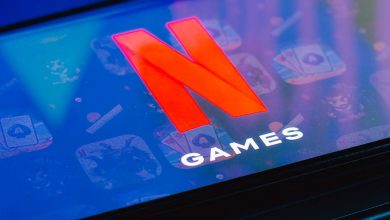Internet
For years, U.S. broadband has acquired a nasty rap by evaluating it to the European market. That rap — and the comparability it’s based on — is doubtful, in response to a report launched Monday by a D.C. tech suppose tank.
Comparisons between U.S. and European broadband costs abound, however their respective markets are constructed on such solely totally different value constructions as to make any comparability between the 2 meaningless with out accounting for the variations in vital expenditures, famous the report by the Info Know-how & Innovation Basis (ITIF).
Prices for U.S. broadband suppliers are 53% larger than their European counterparts, the ITIF reported, pushed by larger labor prices, taxes, promoting and funds for spectrum licenses.
It added that American suppliers additionally spend extra on capital investments, spending extra each on an general and per family foundation than European suppliers, who’ve the advantages of decrease taxes and authorities subsidies.
One other criticism of U.S. suppliers — that they artificially inflate costs to pad earnings — doesn’t maintain water, both, the report maintained, since common earnings amongst European suppliers are larger than their stateside counterparts.
“The U.S. telecommunications market could be very totally different from Europe,” noticed know-how analyst Jeff Kagan. “So, evaluating them makes little sense. It’s like making an attempt to match a pizza to a fried hen.”
“The European mannequin has the federal government concerned extra intently,” he advised TechNewsWorld. “When the federal government is a part of the combo, the standard is decrease.”
Contents
Finish Unproductive Comparisons
The report defined that broadband populists in the US have argued that the U.S. broadband system, by means of which most individuals obtain broadband from massive, non-public telecommunications or cable corporations, is poor.
For many, although, it continued, their animus goes past the sensible to the ideological. They see broadband as one thing that inherently requires a robust authorities function, not a non-public sector one.
To advance their case, the report famous, they argue that the U.S. system underperforms different nations and areas, particularly in Europe, the place the EU has imposed strict community unbundling necessities on incumbents.
However as this report exhibits, it added, evaluating EU and U.S. broadband is fraught with difficulties, and an important one is that any such evaluation inherently includes evaluating “apples to oranges.”
It’s time to finish the unproductive EU-U.S. broadband comparisons and to place the misguided perception that the 2 constructions are corresponding to relaxation, the report declared.
“Shoppers aren’t evaluating themselves to Europe,” maintained Bruce Leichtman, president of the Leichtman Analysis Group in Durham, N.H., which makes a speciality of analysis and evaluation on the adoption of services and products within the broadband, media and leisure industries.
“They’re evaluating themselves to what they get, they usually’re typically happy with that,” he advised TechNewsWorld.
Extra Literacy Wanted
Ought to the U.S. revamp its broadband coverage to extra intently align with the EU mannequin?
Jessica Dine, a analysis assistant for broadband coverage on the ITIF and a co-author of the report, thinks not. “Proper now, most of our focus must be on making certain that each state participates thoughtfully and wholeheartedly within the present packages designed to encourage deployment and adoption,” she advised TechNewsWorld.
“The cash is already there,” she continued. “The actual query is whether or not it’ll be used successfully.”
Dine defined that whereas some rural areas doubtless gained’t be served with out subsidies, the $65 billion allotted to broadband by means of the Infrastructure Funding and Jobs Act enacted by Congress ought to actually be sufficient to lastly shut the digital divide.
“For some time now, a few of the greatest gaps in American broadband entry have been on the adoption aspect, not deployment,” she stated. “So there may be good motive to tug again on funding high-cost areas and as a substitute give attention to packages like Lifeline to assist needy people no matter the place they stay.”
“We also needs to reimagine this system to transcend decreasing prices of web entry on the particular person degree to additionally encouraging digital literacy,” she famous.
Leichtman added that within the surveys performed by his agency, only one% of respondents stated they wished broadband however couldn’t get it.
“The primary motive for not having broadband shouldn’t be availability, not value, it’s lack of want,” he asserted. “And the explanation for lack of want is pc literacy. It’s older folks and poor folks with out computer systems.”
“If we make all of it about availability, we’re actually lacking the basis of the difficulty, which is pc literacy,” he stated.
Unwarranted Worry of Falling
The report additionally famous that critics of U.S. broadband contend failure to emulate Europe’s method to the know-how will consequence within the nation falling behind the pack of developed nations on the subject of high-speed web entry, capability and costs. Dine disputes that.
Based on a report from the European Telecommunications Community Operator’s Affiliation, she famous, U.S. broadband had a median mounted downlink velocity of 199 Mb/s, considerably larger than the world common of 108 Mb/s.
Within the cellular space, she continued, the typical U.S. downlink velocity of 96 Mb/s beat each the European and world averages. What’s extra, U.S. 5G protection at 93.1% of its inhabitants is larger than each Europe and Japan, and barely beneath South Korea.
She added that U.S. high-speed, mounted broadband protection in 2020 was 98% of households in comparison with 87% in Europe.
“Whereas costs are harder to match immediately, U.S. costs are falling,” she stated, citing the “2022 Broadband Pricing Index” by USTelecom. It exhibits that U.S. suppliers’ hottest velocity tier of service fell in value by 14.7% from 2021 to 2022, when adjusted for inflation, and the worth of the quickest velocity dropped by 11.6%.
Flawed Comparability Persists
As flawed as comparisons between the European and U.S. broadband markets may be, they proceed to persist. “There appears to be a permanent perception that to evaluate one thing precisely you might want to examine it to the competitors,” Dine stated. “On this case, it’s interesting to look between U.S. and European broadband choices to argue that one is doing higher than the opposite.”
“That’s not essentially a nasty method on the subject of areas which might be truly comparable between international locations, and it may be a useful approach to pinpoint flaws or approaches that must be adopted,” she noticed.
“As this report factors out, there are quite a lot of underlying variations within the regulatory, financial and geographical foundations of every nation’s broadband market,” she continued. “Taken collectively, these represent such main variations in the price inherent in deploying broadband that it isn’t essentially useful to match costs with out taking prices under consideration.”
Conclusion: So above is the Internet article. Hopefully with this article you can help you in life, always follow and read our good articles on the website: Thaoam.net




